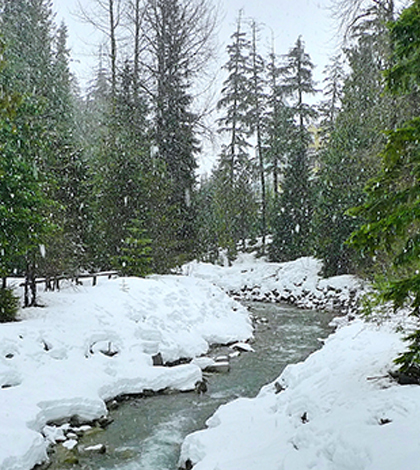Atmospheric Rivers Linked To Melting Sierra Nevada Snowpack

Rain falling on snow. (Credit: Flickr user Malcolm Peacey, Creative Commons 2.0)
A new study by NASA, Scripps Institution of Oceanography and other partners has found that in California’s Sierra Nevada, atmospheric river storms are two-and-a-half times more likely than other types of winter storms to result in destructive “rain-on-snow” events, where rain falls on existing snowpack, causing it to melt. Those events increase flood risks in winter and reduce water availability the following summer.
The study, based on NASA satellite and ground-based data from 1998 through 2014, is the first to establish a climatological connection between atmospheric river storms and rain-on-snow events. Collaborators on the study included scientists from the University of California, Los Angeles, and the Earth System Research Laboratory in Boulder, Colorado.
Atmospheric rivers are narrow jets of very humid air that normally originate thousands of miles off the West Coast, in the warm subtropical Pacific Ocean. When the warm, moist air hits the Sierra Nevada and other high mountains, it drops much of its moisture as precipitation. Only 17 percent of West Coast storms are caused by atmospheric rivers, but those storms provide 30 to 50 percent of California’s precipitation and 40 percent of Sierra snowpack, on average.
Full results of the study are published in the journal Geophysical Research Letters.
Top image: Rain falling on snow. (Credit: Flickr user Malcolm Peacey, Creative Commons 2.0)




0 comments